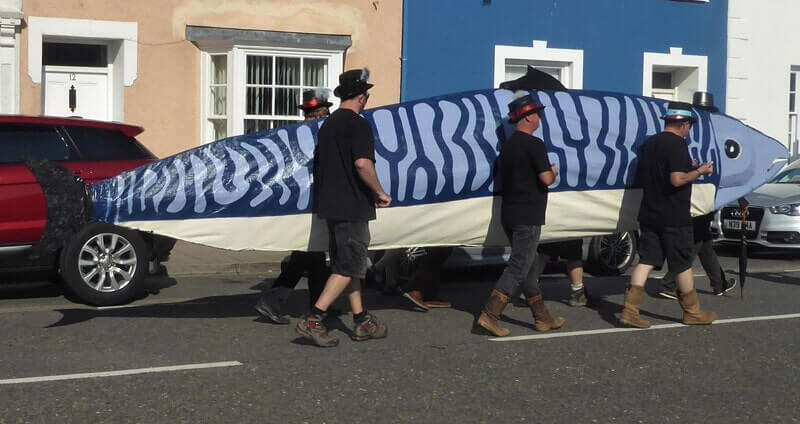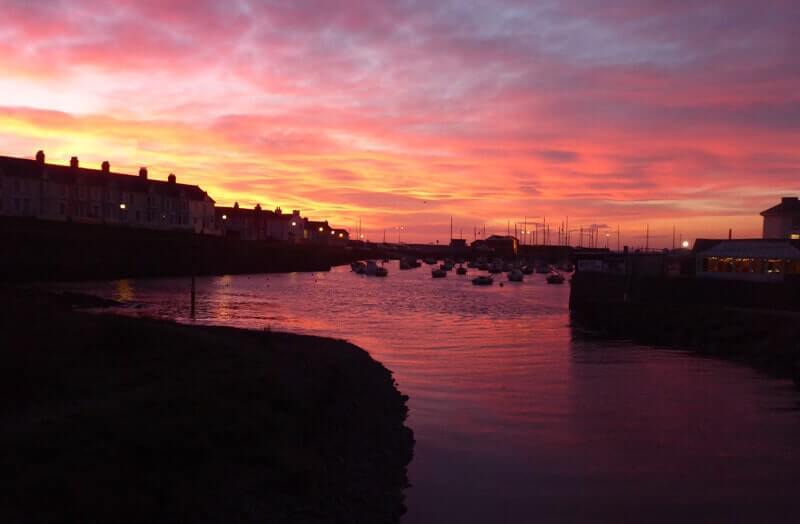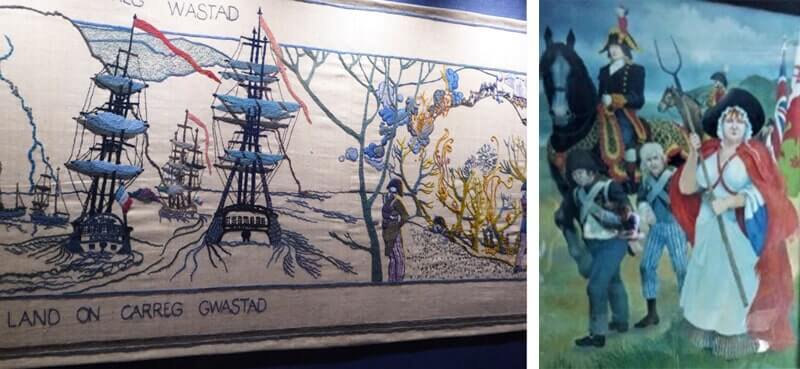Enjoy a relaxed meander through Wales by on foot or by public transport. Some ideas and suggestions for when Wales opens up again for tourists.
A magical country of myths and mystery, mountains and streams and, of course, a stunning coastline. Wales has it all. Forget the car. The best way to explore its hidden treasures is on foot and by slow, meandering public transport.
The divide between North and South Wales – from a transport point of view rather than any notion of language, culture or geographic division – has to be Aberystwyth. Straight across the centre of Wales to the middle of the coastal path on the western seashore of Cardigan Bay, and with a direct train from Birmingham Airport or City Centre, you have the enviable option of whether to veer off to the south or north. Clearly, there are other places to start your journey, but this is the perfect spot to get acquainted with the magic and mystery that is Wales.
“The bus is a particular favourite as the routes often branch off into small rural villages you would not otherwise see, many of them with significant historical or cultural features. It is even better during the summer months when little Hopper buses are in operation along the coast.”
 When you ask people about their impressions or memories of Wales, they often include seaside holidays, caravans, or imposing ancient Castles and fortifications. Sometimes the impressions are less positive, citing the dark, depressing coal mines, slag heaps and slate quarries of the industrial south. However, it manages to offer an incredibly diverse range of insights into its people and culture.
When you ask people about their impressions or memories of Wales, they often include seaside holidays, caravans, or imposing ancient Castles and fortifications. Sometimes the impressions are less positive, citing the dark, depressing coal mines, slag heaps and slate quarries of the industrial south. However, it manages to offer an incredibly diverse range of insights into its people and culture.
From the Medieval Queen of Caernarfon Castle, the first to introduce a mortgage system for tenant farmers; Miss Vulcana from Abergavenny, the 19th century Women’s weight-lifting champion and mother of 5 children; the one-eyed preacher Christmas Evans; to Aneurin Bevan the founder of the NHS, there are certainly plenty of fascinating characters to discover.
So, bump along country lanes on a bus, walk alongside rivers and canals, experience traditional steam trains as well as the most picturesque service train route in Britain up to Portmeirion, and meander your way across this magical land.
Aberystwyth
Aberystwyth has a lot for the visitor to explore so is a great start/end point whether you are keen on architectural treasures, the arts, or the workmanship of Victorian structures.
Aberaeron
Locals line the streets of the town, jostling to secure a great viewing point and enjoying the summer sunshine as they wait expectantly for it all to start. Cameras at the ready, iPads and phones charged, all eyes shift towards the sound of the band and the wailing voices coming slowly along Market Street on the mackerel’s last journey of the year.


The procession moves on around the harbour, traffic held back as the giant, glistening mackerel crosses the bridge, gliding effortlessly towards its final resting place on South Beach. It reaches the quay, the eulogy and blessings are solemnly announced, and the congregation of devout followers stands back as the mackerel is set alight and returned to the sea at high tide.
The atmosphere changes instantly to one of celebration, drinks flowing freely at the Yacht Club, a barbecue, music, and dancing until late. It is the end of August, a time to mourn the passing of another fishing season, so what better time to hold a procession?


At any time of year, you can enjoy richly coloured sunsets across the sea to the fiery west. What of the weather in this part of west Wales? Henry the post said, “no, it never freezes here, and we don’t get the snow like they do inland”, but there is always the exception to the rule! The snow came thick and fast that year, not heavily at first but gradually forming a soft, gentle blanket over the town and harbour. Temperatures dropped further and in spectacular fashion, the river and harbour froze over and tractors came out to scrape a path through 5-6 inches of solid ice. The first time in living history, it is still part of the collective memory of locals so a great way to start a conversation when you are stuck for words.
Take the bus or walk the coastal path down to New Quay, look out for the dolphins in the bay, then join the Cardi Bach minibus along the coast to Cardigan. Be prepared for a very bumpy 2-hour ride along narrow, twisting lanes following the coast via Cwmtydu, Llangranog, Penbryn and Aberporth. It is a worrying sign when the lane narrows but the grass growing down the middle gets wider, shrubs and branches leaning in to brush against the sides of the minibus. The expert driver steams ahead, unphased, happily chatting with new passengers as they join us, smiling and waving at the oncoming car until he gives in and reverses a quarter of a mile to let us pass.


The invading ships anchored offshore, some of the French soldiers had landed and managed to get a few miles inland. They knew the men of the town were away, assembling to support Thomas Knox and Lord Cawdor, so this was their opportunity. As more of the French landed, they were alarmed to see an advancing army much bigger than expected. The women of Fishguard, the only ones left to defend the town, were determined to thwart the French so prepared for battle with pitchforks and other implements. Confusing local women’s red shawls for soldiers’ uniforms, panic set in and the French surrendered, only then realizing their mistake.


This is just a glimpse of places to explore along this section of Cardigan Bay, with so much to see as you carry on southwards to St David’s, Pembroke Castle and its Christmas Fair, Manorbier and then to Carmarthen. From there, you have a range of options to carry on your journey by bus and train, on to Swansea and Cardiff. If you fancy long-distance walks, the Wye Valley Way stretches from Chepstow up to Plynlimon in the north, or there is easier walking along the Brecon Monmouthshire Canal. There are plenty of places to stay along the way, so plan your timetable and book ahead to explore more of Wales.












